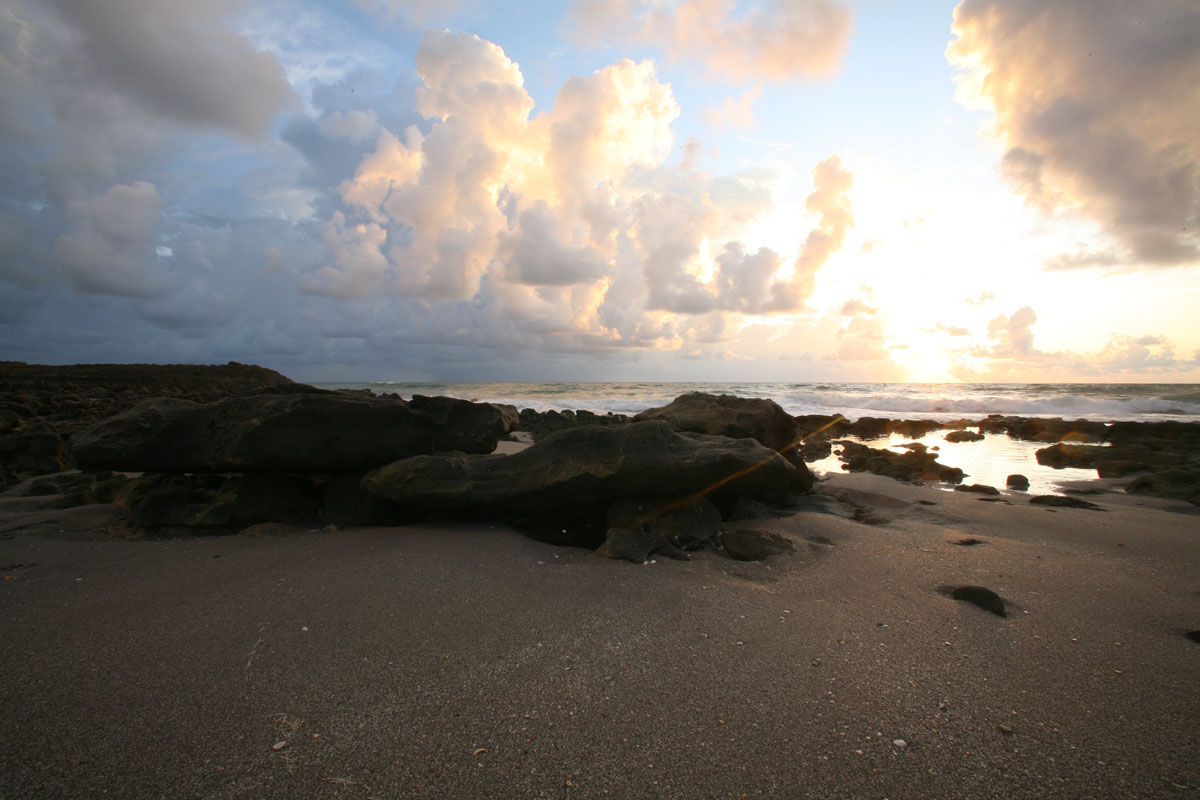Chapter One
of Captain Kimo’s HDR How-to Guide
Welcome to the the first chapter of my HDR guide lets begin by understanding HDR.
What does HDR stand for?
If you think HDR stands for High Definition Resolution… that would be a good assumption. If we were talking about TVs, you probably would have been right. But this site isn’t about TVs it’s about photography, and in photography, HDR stands for High Dynamic Range.
What does High Dynamic Range mean?
Simply put… high dynamic range means more. More of whatever it is you are trying to get, and in photography, more exposure is what photographers are after. Now when I say more exposure I don’t mean more pictures. What I mean is more image in a single photo. To better understand, I’ve posted two photos below.
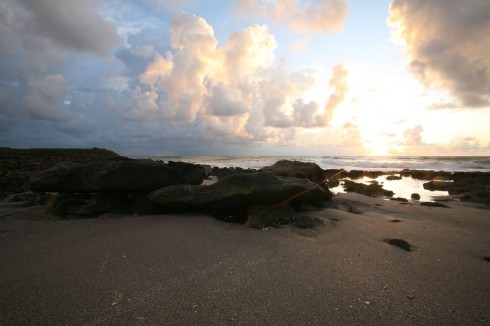 |
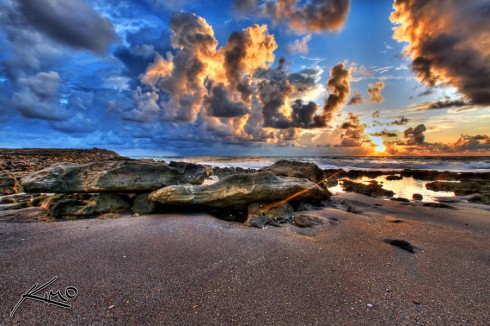 |
| Standard Photograph | HDR Photograph |
I’m sure you noticed the HDR photograph has a lot more detail and color than the standard photograph. This is because the HDR photo is a combination of multiple photos combined. A standard photograph is only one photo, and one photo is limited to a single range of color and detail. If you’re confused, don’t worry. You’ll soon understand what I mean.
How do you create HDR photographs?
HDR photos are made from multiple exposures taken of a single image. Below are the three photos that make up our beautiful beach scene above. Each photo has it’s own range of color and detail.
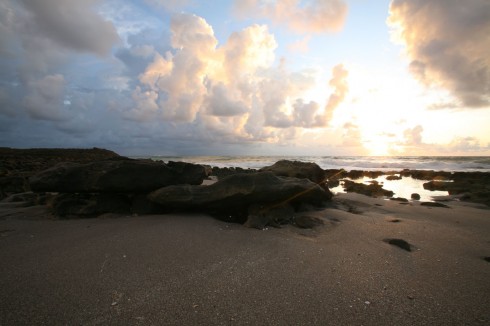 |
This is the standard exposure that was shown above which was limited to a range of detail and color. Notice the blown out sky around the sun and the dark areas within the rocks. |
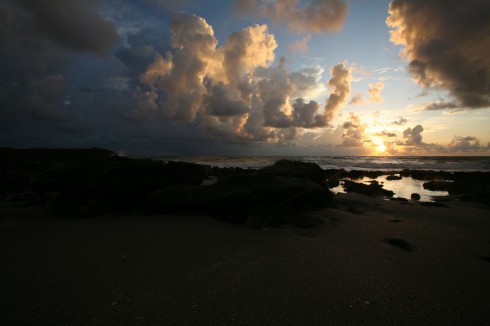 |
This exposure is a darker version of the above photo. But we have more color in the sky and the sun is not blown out like the above image. The clouds also have a lot more definition than the standard photo. |
 |
This exposure is much brighter than both the exposures above. The sky is even more blown out. However if you look closely at the rocks you see that there are very few shadows and a lot more detail. |
 |
To create the final HDR photograph we will need to merge all three exposure together using HDR Software. I use Photomatix to accomplish this task. Photomatix is the most popular HDR software available. |
What are the benefits of HDR ?
- Photograph without worrying about exposure
- Light and dark subjects can be better defined
- Exceed a cameras physical limitation
- More image detail and color for processing
What are the disadvantages?
- Halos resulting from extreme tonal differences
- Ghosting resulting from movement
- Banding from color shift in exposures
- More work than standard photographs
How long has HDR Photography been around?
HDR Photography has been around since the invention of the camera. The camera has always been physically limited to the range of light it’s capable of capturing. Photographers have always worked around it’s limitation by using filters and combining film exposures. Since the birth of the digital age photographers started creating new solutions to achieve even more dynamic range using technology and software.
